
(a)
Interpretation:
Whether the given compound can undergo a Friedel–Crafts reaction, it is to be determined.
Concept introduction:
The Friedel–Crafts reaction is the electrophilic aromatic substitution reaction. In The Friedel–Crafts alkylation, the
Answer to Problem 23.51P
The given compound can undergo a Friedel–Crafts reaction as the aromatic ring is activated by two methyl groups.
Explanation of Solution
The given aromatic compound is:
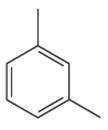
In this aromatic compound, the benzene ring has two methyl groups attached. The alkyl groups are electron donating inductively, thus increases the electron density around the ring and activates it. As the ring is electron rich and activated it can undergo Friedel–Crafts reaction.
It is determined that a given compound can undergo Friedel–Crafts reaction based on the activation of aromatic ring.
(b)
Interpretation:
Whether the given compound can undergo a Friedel–Crafts reaction, it is to be determined.
Concept introduction:
The Friedel–Crafts reaction is the electrophilic aromatic substitution reaction. In The Friedel–Crafts alkylation, the aromatic compound reacts with alkyl halide in presence of
Answer to Problem 23.51P
The given compound cannot undergo a Friedel–Crafts reaction as the aromatic ring is deactivated by two acetyl groups.
Explanation of Solution
The given aromatic compound is:
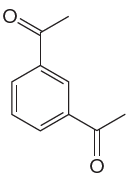
In this aromatic compound, the benzene ring has two acetyl (carbonyl) groups attached. The carbonyl groups have electron withdrawing resonance effect, thus decreases the electron density around the ring and deactivates it. As the ring is electron poor and deactivated it cannot undergo Friedel–Crafts reaction.
It is determined that a given compound cannot undergo Friedel–Crafts reaction based on the deactivation of aromatic ring.
(c)
Interpretation:
Whether the given compound can undergo a Friedel–Crafts reaction, it is to be determined.
Concept introduction:
The Friedel–Crafts reaction is the electrophilic aromatic substitution reaction. In The Friedel–Crafts alkylation, the aromatic compound reacts with alkyl halide in presence of
Answer to Problem 23.51P
The given compound cannot undergo a Friedel–Crafts reaction as the aromatic ring is deactivated by nitrile groups.
Explanation of Solution
The given aromatic compound is:
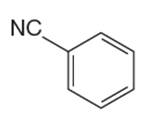
In this aromatic compound, the benzene ring has nitrile group attached. The nitrile group have electron withdrawing resonance effect, thus decreases the electron density around the ring and deactivates it. As the ring is electron poor and deactivated it cannot undergo Friedel–Crafts reaction.
It is determined that a given compound cannot undergo Friedel–Crafts reaction based on the deactivation of aromatic ring.
(d)
Interpretation:
Whether the given compound can undergo a Friedel–Crafts reaction, it is to be determined.
Concept introduction:
The Friedel–Crafts reaction is the electrophilic aromatic substitution reaction. In The Friedel–Crafts alkylation, the aromatic compound reacts with alkyl halide in presence of
Answer to Problem 23.51P
The given compound cannot undergo a Friedel–Crafts reaction as the aromatic ring is deactivated by
Explanation of Solution
The given aromatic compound is:

In this aromatic compound, the benzene ring has
It is determined that a given compound cannot undergo Friedel–Crafts reaction based on the deactivation of aromatic ring.
(e)
Interpretation:
Whether the given compound can undergo a Friedel–Crafts reaction, it is to be determined.
Concept introduction:
The Friedel–Crafts reaction is the electrophilic aromatic substitution reaction. In The Friedel–Crafts alkylation, the aromatic compound reacts with alkyl halide in presence of
Answer to Problem 23.51P
The given compound cannot undergo a Friedel–Crafts reaction as the aromatic ring is deactivated by
Explanation of Solution
The given aromatic compound is:
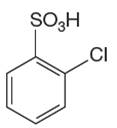
In this aromatic compound, the benzene ring has
It is determined that a given compound cannot undergo Friedel–Crafts reaction based on the deactivation of aromatic ring.
(f)
Interpretation:
Whether the given compound can undergo a Friedel–Crafts reaction, it is to be determined.
Concept introduction:
The Friedel–Crafts reaction is the electrophilic aromatic substitution reaction. In The Friedel–Crafts alkylation, the aromatic compound reacts with alkyl halide in presence of
Answer to Problem 23.51P
The given compound can undergo a Friedel–Crafts reaction as the aromatic ring is activated by one methyl and one methoxy groups.
Explanation of Solution
The given aromatic compound is:
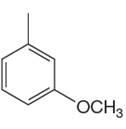
In this aromatic compound, the benzene ring has one methyl and one methoxy groups attached. The alkyl groups are electron donating inductively and methoxy group has electron donating resonance effect, thus increases the electron density around the ring and activates it. As the ring is electron rich and activated it can undergo Friedel–Crafts reaction.
It is determined that a given compound can undergo Friedel–Crafts reaction based on the activation of aromatic ring.
Want to see more full solutions like this?
Chapter 23 Solutions
EBK ORGANIC CHEMISTRY: PRINCIPLES AND M
- Q4: Draw the mirror image of the following molecules. Are the molecules chiral? C/ F CI CI CH3 CI CH3 CI CH3 CH 3 |||||... CH3arrow_forwardQ6: Monochlorination of methylcyclopentane can result in several products. When the chlorination occurs at the C2 position, how many stereoisomers are formed? If more than one is formed, are they generated in equal or unequal amounts? 2arrow_forwardShow work. Don't give Ai generated solutionarrow_forward
- Please correct answer and don't use hand ratingarrow_forwardQ: Draw the molecular orbital energy level diagram for the following molecules. 1- The SF4 molecule is seesaw molecular geometry and has C2v point group. 2- The Mn(CO)s molecule with C4v point group is square pyramidal.arrow_forwardPlease correct answer and don't use hand ratingarrow_forward
- when a 0.150 g sample of the compound was burned, it produced 0.138 g CO2 & 0.0566 g H2O. All the nitrogen in a different 0.200 g sample of the compound was converted to NH3, which was found to weigh 0.0238 g. Finally, the chlorine in a 0.125 g sample of the compound was converted to Cl- and by reacting it with AgNO3, all of the chlorine was recovered as the solid AgCl. The AgCl, when dried was found to weigh 0.251 g. What is the empirical formulaarrow_forwardPlease correct answer and don't use hand rating and don't use Ai solutionarrow_forwardHow to determine if this is N- ethylsaccharin or O-ethylsaccharin or a mixture of both based on chemical shifts.arrow_forward
 ChemistryChemistryISBN:9781305957404Author:Steven S. Zumdahl, Susan A. Zumdahl, Donald J. DeCostePublisher:Cengage Learning
ChemistryChemistryISBN:9781305957404Author:Steven S. Zumdahl, Susan A. Zumdahl, Donald J. DeCostePublisher:Cengage Learning ChemistryChemistryISBN:9781259911156Author:Raymond Chang Dr., Jason Overby ProfessorPublisher:McGraw-Hill Education
ChemistryChemistryISBN:9781259911156Author:Raymond Chang Dr., Jason Overby ProfessorPublisher:McGraw-Hill Education Principles of Instrumental AnalysisChemistryISBN:9781305577213Author:Douglas A. Skoog, F. James Holler, Stanley R. CrouchPublisher:Cengage Learning
Principles of Instrumental AnalysisChemistryISBN:9781305577213Author:Douglas A. Skoog, F. James Holler, Stanley R. CrouchPublisher:Cengage Learning Organic ChemistryChemistryISBN:9780078021558Author:Janice Gorzynski Smith Dr.Publisher:McGraw-Hill Education
Organic ChemistryChemistryISBN:9780078021558Author:Janice Gorzynski Smith Dr.Publisher:McGraw-Hill Education Chemistry: Principles and ReactionsChemistryISBN:9781305079373Author:William L. Masterton, Cecile N. HurleyPublisher:Cengage Learning
Chemistry: Principles and ReactionsChemistryISBN:9781305079373Author:William L. Masterton, Cecile N. HurleyPublisher:Cengage Learning Elementary Principles of Chemical Processes, Bind...ChemistryISBN:9781118431221Author:Richard M. Felder, Ronald W. Rousseau, Lisa G. BullardPublisher:WILEY
Elementary Principles of Chemical Processes, Bind...ChemistryISBN:9781118431221Author:Richard M. Felder, Ronald W. Rousseau, Lisa G. BullardPublisher:WILEY





